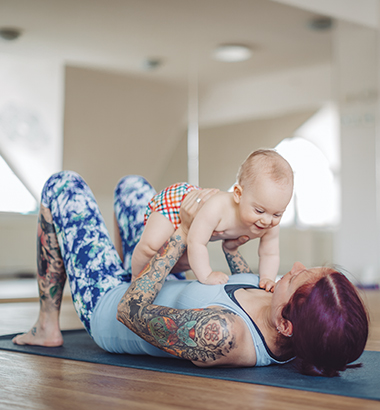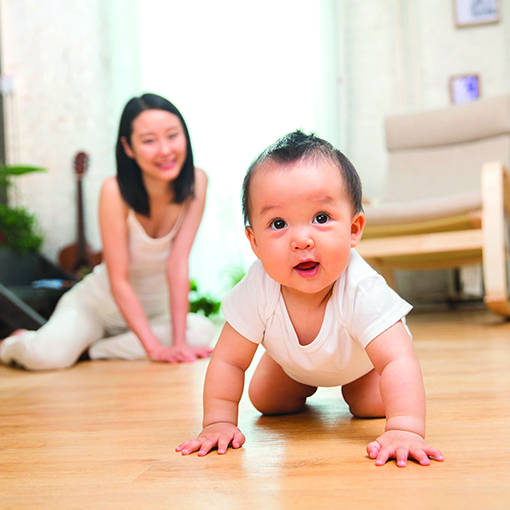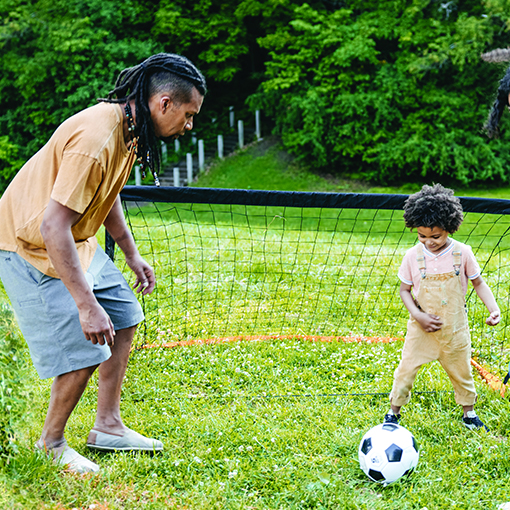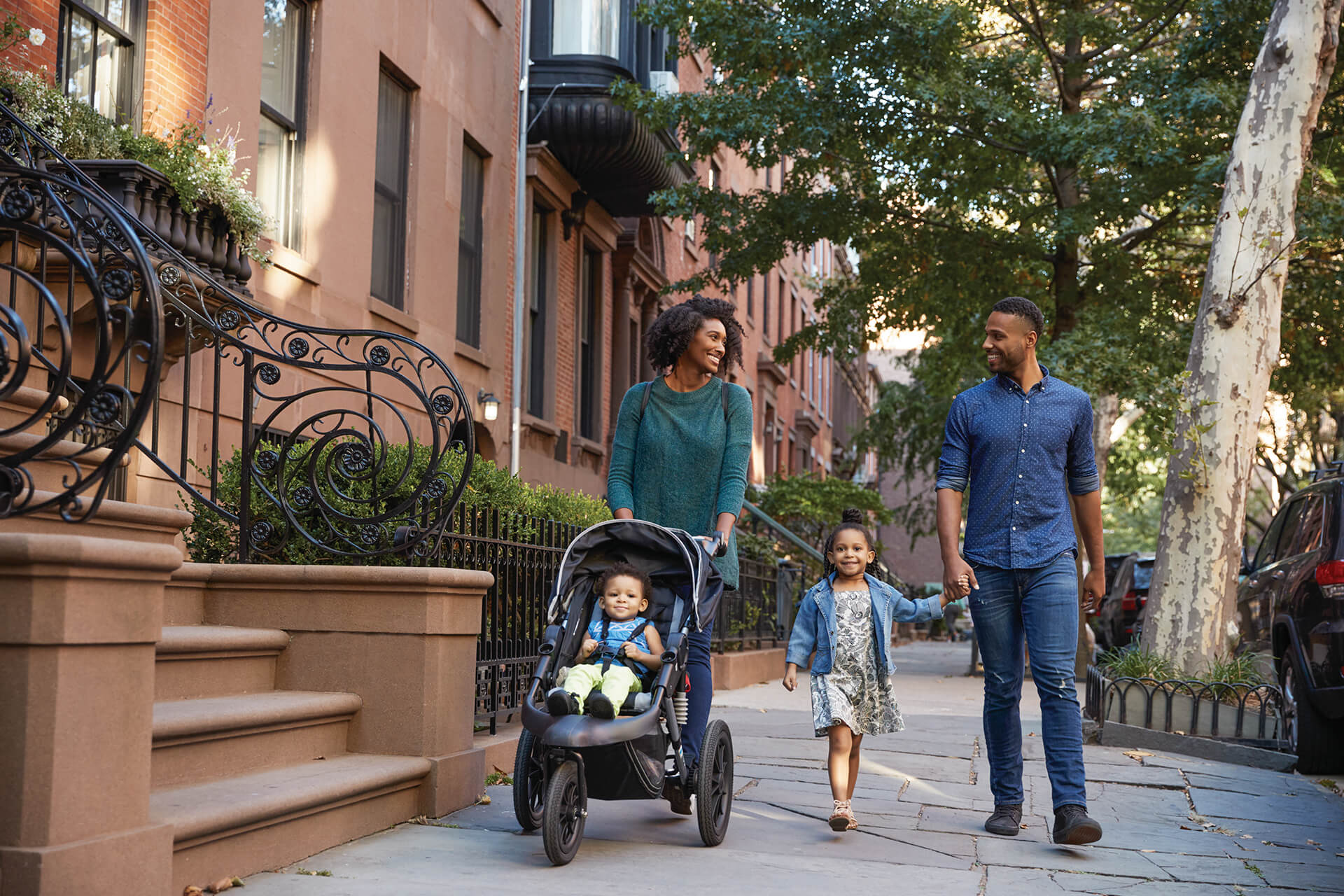Physical Activity for… Babies, Toddlers, and Parents
By: Christina mcGeough, mph, rd, CDCES

When I first became a mom, I looked forward to resuming outdoor running and spinning classes at my local gym. At first, coordinating my runs or going to a gym class was hard because of how frequently I was breastfeeding. I thought I could just jump right back into running, but boy was I wrong! Once I was around 8 weeks postpartum with my firstborn, I strapped on my two sports bras and sneakers, and headed out on my first run. After a few short blocks things didn’t feel quite right. My body was not ready; I felt weak and unprepared. Along the way I realized that physical activity could be what I made of it, whether it was long walks with the baby in the stroller or his carrier, a mommy and me yoga class, or a structured gym class.
Let’s explore physical activity options for babies, toddlers, and parents.

Newborn stage: 0-3 months
At this stage, everything is new and awkward.
New parents are tired and adjusting to life with
a baby. Many new parents find the easiest activity to incorporate is walking. Walking gets you out of the house, gives you some much needed Vitamin D, and helps with your mood. The movement of the stroller and/or carrier can also help your baby sleep. Another important activity for your baby is to have tummy time throughout the day to help them develop good head and neck control.
Infant Stage: 4-12 months
Your baby will be more alert, playful, and start doing all kinds of things like rolling, sitting, and crawling during this time. Walks are still great for the whole family and may be an important part of your baby’s daily routine. Parents may even enjoy runs with a jogging stroller or parent and baby fitness classes.


Toddler stage: 13-24 months
During this time your toddler is on the move, learning to walk and climb. They are curious and active. Park strolls and trips to the playground are a fun way to help them get that endless energy out. Parents are often actively running after their toddlers, but it is also important to carve out time for self-care. This is also a good stage for parents to work on their own physical strength and endurance to help keep up with their little ones.
Preschool stage: 3-5 years old
Children are much more coordinated at this stage and may enjoy soccer, basketball, or swim class. Organized sports activities for children encourage both physical activity and healthy social skills. It’s important for parents to prioritize physical activity for themselves too: aim to get at least 150 minutes of physical activity a week with a combination of aerobic and strength training activities.


